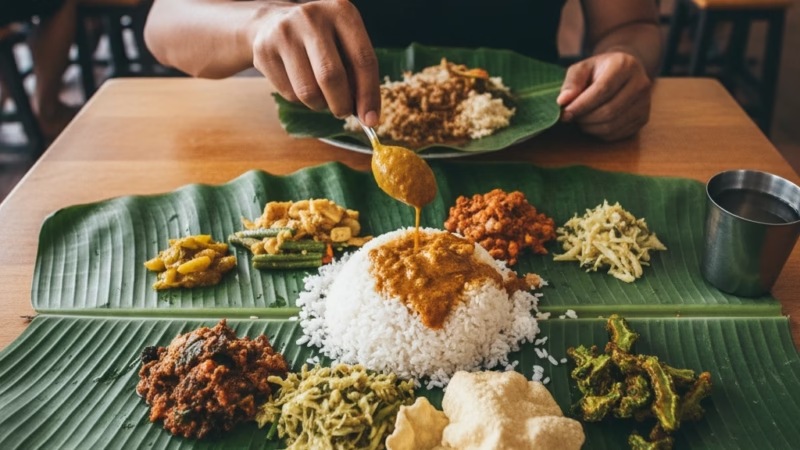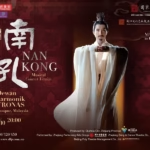How to Enjoy Banana Leaf Rice the Malaysian Way

Introduction
If you’ve ever visited Malaysia, you’ve likely seen locals tucking into a vibrant meal served on a banana leaf. This traditional South Indian-inspired dining experience is more than just food — it’s a feast for the senses. In this guide, you’ll learn how to enjoy banana leaf rice the Malaysian way: from ordering the right dishes to eating it correctly with your hands. Perfect for first-timers or anyone curious about this cultural dining ritual, let’s dive into the flavorful world of banana leaf rice!
Step 1: Choose the Right Restaurant
Banana leaf rice is commonly served at Indian restaurants (especially South Indian eateries). Look for popular spots around Kuala Lumpur, Penang, or Johor Bahru with long lunch queues — that’s a good sign of authenticity. Some well-known chains include Sri Nirwana Maju and Devi’s Corner.
Tip: Go during lunchtime when the side dishes and curries are freshest.
Step 2: Understand the Banana Leaf Setup
When you sit down, a large banana leaf is placed in front of you — this is your plate! The servers will start piling on white rice, vegetarian side dishes like cucumber salad, pickles, and curried vegetables, and pour your choice of curry over the top.
Why it matters: The banana leaf enhances aroma and flavor, and it’s also biodegradable — a nod to traditional eco-friendly dining.
Step 3: Select Your Curries and Sides
Most banana leaf meals come with three vegetarian sides, plus your choice of curry — fish, chicken, dhal (lentil), or mutton. You can also add fried items like chicken, squid, or bitter gourd, and even papadum (crispy crackers) for crunch.
Tip: Don’t be shy to ask for more curry or rice — refills are often free!
Step 4: Eat the Traditional Way — With Your Hands
Eating with your right hand is part of the experience. Mix your rice and curry using your fingertips and form small bites before lifting them to your mouth. Keep your left hand clean — it’s considered impolite to use it for eating.
Pro tip: If you’re new to this, use the tips of your fingers, not your whole hand. It’s cleaner and easier to manage.
Step 5: Know the Etiquette
Banana leaf rice has its own set of unspoken rules:
- Leaf direction matters: Folding the banana leaf toward you shows satisfaction and gratitude; folding it away means you didn’t enjoy the meal.
- Don’t waste food: Take only what you can finish — it’s a sign of respect.
- No mixing non-veg and veg curries: In some restaurants, vegetarian curries are served separately for cultural reasons.
Step 6: End with Curd or Payasam
Many places serve curd (yogurt) or payasam (sweet dessert) to finish your meal. Curd helps cool your palate after spicy curries, while payasam offers a sweet ending to your feast.
Fun fact: In traditional South Indian culture, this closing step symbolizes balance — spicy and cool, savoury and sweet.
Step 7: Wash and Reflect
Once you’re done, wash your hands thoroughly. Reflect on the experience — it’s not just about eating but appreciating the cultural ritual of sharing, generosity, and gratitude that comes with banana leaf dining in Malaysia.
FAQs
1. Is banana leaf rice vegetarian?
Traditionally, it starts vegetarian, but you can add meat or seafood sides based on your preference.
2. Can I ask for less spicy food?
Yes! Just mention it when ordering — most restaurants are happy to adjust the spice level.
3. Do you have to eat with your hands?
No, you can use cutlery if you prefer, but eating with your hands enhances the flavor and authenticity.
4. Is it expensive?
A standard banana leaf rice meal usually costs RM10–RM20, depending on the restaurant and sides.
Conclusion
Enjoying banana leaf rice the Malaysian way is about embracing culture, flavor, and community. From the fragrant curries to the symbolic banana leaf, every part of the meal tells a story of tradition and togetherness. So the next time you’re in Malaysia, skip the fork — and dive in with your fingers for an authentic experience you won’t forget!






















Comments are closed.